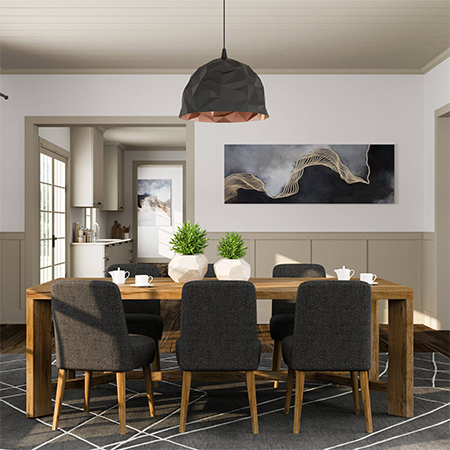How Do I Know Which Primer to Use?
With any painting job, you need to know which primer to use for whatever you are painting if you want a long-lasting finish.
11/08/2023
When it comes to painting jobs in and around the house, many of us are so in a hurry to get it finished that we tend to skip a few important steps along the way. Not using the correct primer or leaving primer out completely is a common fault and one that happens too frequently. A primer coat is important for the majority of painting tasks you undertake and even if a product states that it is primer and paint-in-one, you should still consider the application of a suitable primer. The easiest way to explain this is to compare primer and paint to hair shampoo - one that contains conditioner. Once you use the all-in-one product you immediately know that it doesn't offer the same benefits as using a shampoo and a conditioner.
Why is Paint Primer so important?
When painting a previously unpainted surface or having removed the existing surface, applying a primer suitable for the surface you're painting provides several benefits:
Seals wood to prevent bleeding through the paint layer
Some wood species contain tannin and this is what causes stains to bleed through the paint layer, regardless of how many coats of paint you apply. Wood resin is another cause of bleeding through paint and this can also cause stains to appear on the painted surface. A wood primer blocks both tannin and resin, effectively preventing these from spoiling the painted finish.
Have you painted wood only to see stains appearing? The only way to prevent this is to apply a wood primer before painting.
Blocks pores in board products to reduce absorption
Board products such as SupaWood, MDF, hardboard, and chipboard, are manufactured using extreme pressure on wood chips or pulp. Because of this board products can easily absorb paint without a wood primer being applied. A wood primer seals the surface and reduces absorbency which results in having to use less paint on board products.
SupaWood and MDF are very absorbent and will swell and warp if a primer is not applied. If you plan on using these products in a bathroom, kitchen, or laundry, the application of a wood primer is imperative.
Provides a seal to plaster and brick
Plaster and paint do not go together since plaster surfaces are generally alkaline and paint will not adhere to this. A plaster primer is alkaline-resistant and provides a surface between the plaster and paint. If you fail to use a plaster primer on bare plaster it will more than likely peel off. The same applies to a brick wall. If you fail to apply a primer over bare brick there is a possibility of efflorescence occurring.
Efflorescence is a chalky mineral salt that is deposited on concrete, plaster, mortar or brick walls. A common occurrence in built environments, efflorescence can occur if a plaster or brick primer is not applied.
Wikipedia
Protects metals against rust
A quality primer will usually contain rust inhibitors that protect the metal from rust. Paint alone will not offer the same level of protection so it is always advisable to apply a rust primer before painting metal, wrought iron, etc.
A metal primer that contains a rust inhibitor will further protect exterior fittings and fixtures and eliminate the possibility of rust formation.
Eliminates stains or discolouration
When you are dealing with a situation that involves staining or discolouration, such as on a ceiling, a primer works as a blocking agent and means that you have to apply fewer coats of paint to cover these areas. However, when buying a primer for a particular surface make sure that it also blocks stains. DO follow the manufacturer's instructions to determine whether a single coat or more needs to be applied, particularly for dark stains.
By using a universal primer on stained areas before painting, you will use less paint to cover these areas.










